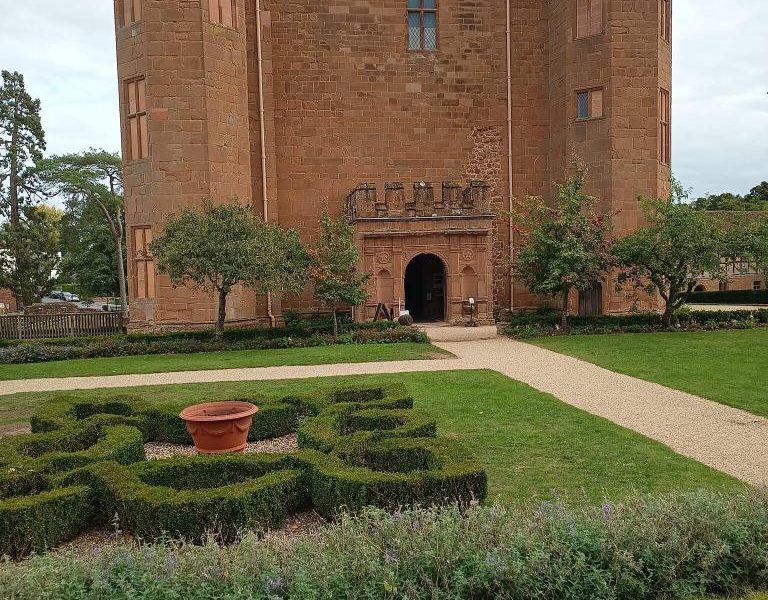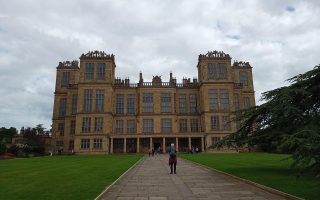Murder mystery, royal scandal, intrigue, sieges, royal prisoners followed by abdication and battles, Kenilworth Castle has a history and then some.
The castle was founded after the Norman conquest and continued to be developed until the Tudor period. It has been described by the architectural historian Anthony Emery as “the finest surviving example of a semi-royal palace of the later middle ages, significant for its scale, form and quality of workmanship”.
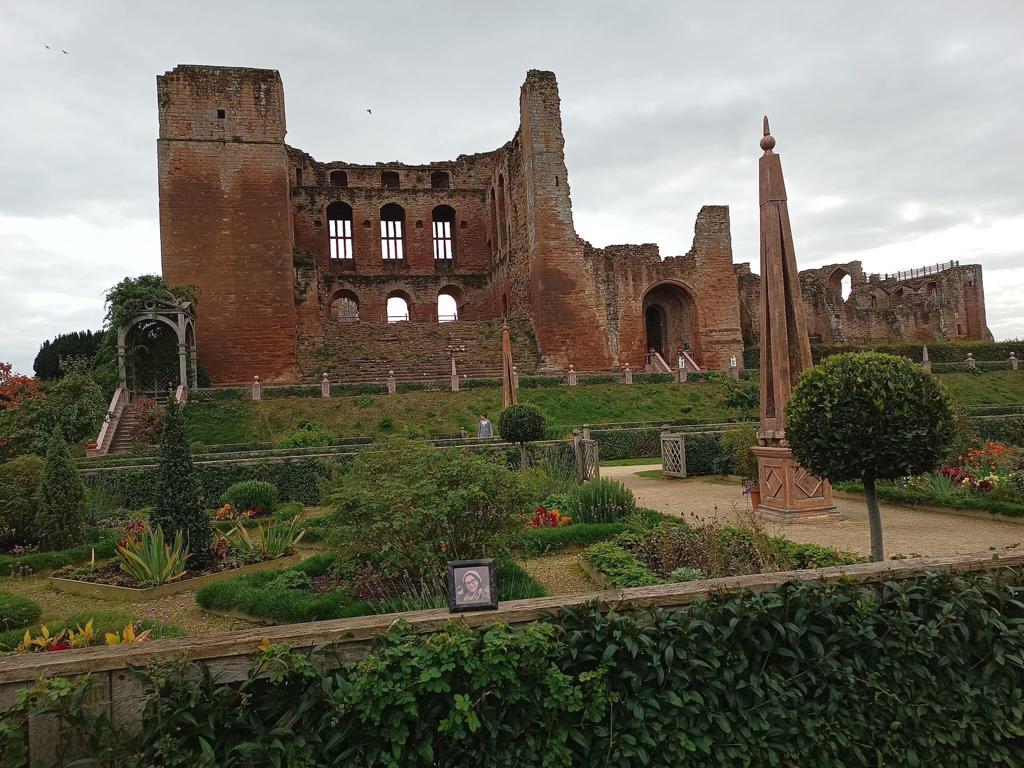
Built over several centuries, the castle started in 1120 with the Norman tower. The castle continued to be developed in the 13th century by King John. Local streams were dammed to form formidable water defences, making the castle safe from attacks from land. John of Gaunt also spent lavishly on it.
The castle is steeped in history. In 1266 it was subjected to the siege of Kenilworth, believed to be the longest siege in medieval history. It was a base for Lancastrian forces during the War of the Roses. Edward II was held at Kenilworth until he agreed to relinquish the throne.
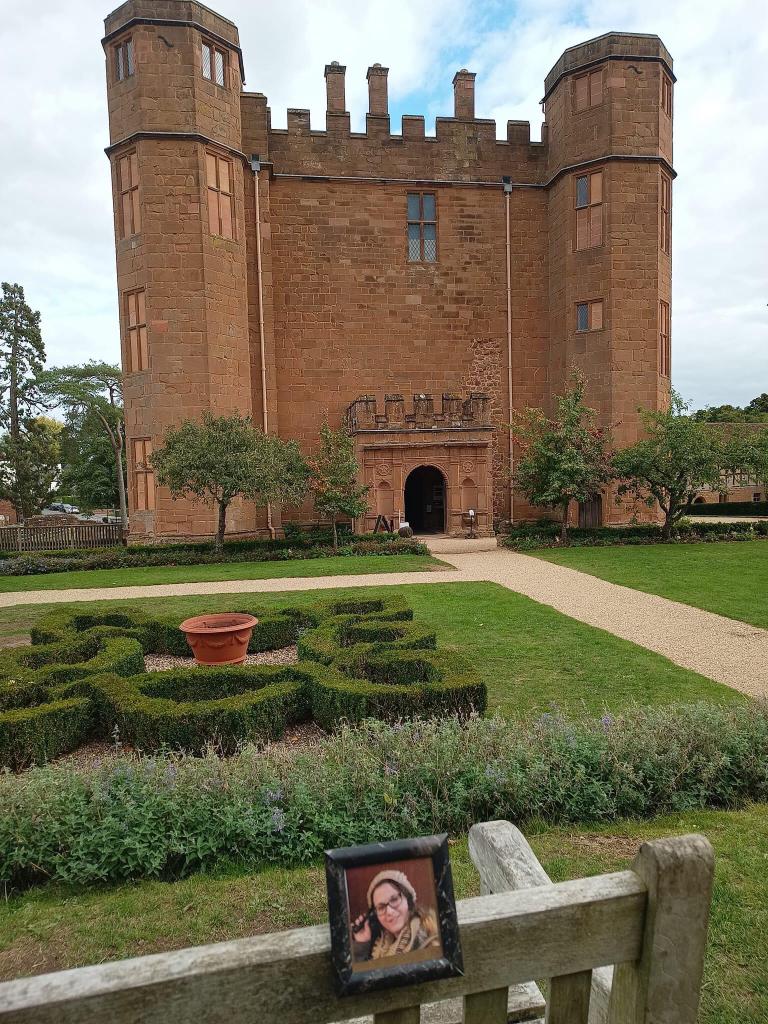
During the 16th century, Kenilworth Castle came into the possession of Robert Dudley, the Earl of Leicester (the second time the castle was owned by an Earl of Leicester. Simon de Monfort, the sixth Earl once owned the castle thanks to his wife, Eleanor, sister of Henry III) who added the Tudor buildings and gardens. All done in an effort to impress his queen.
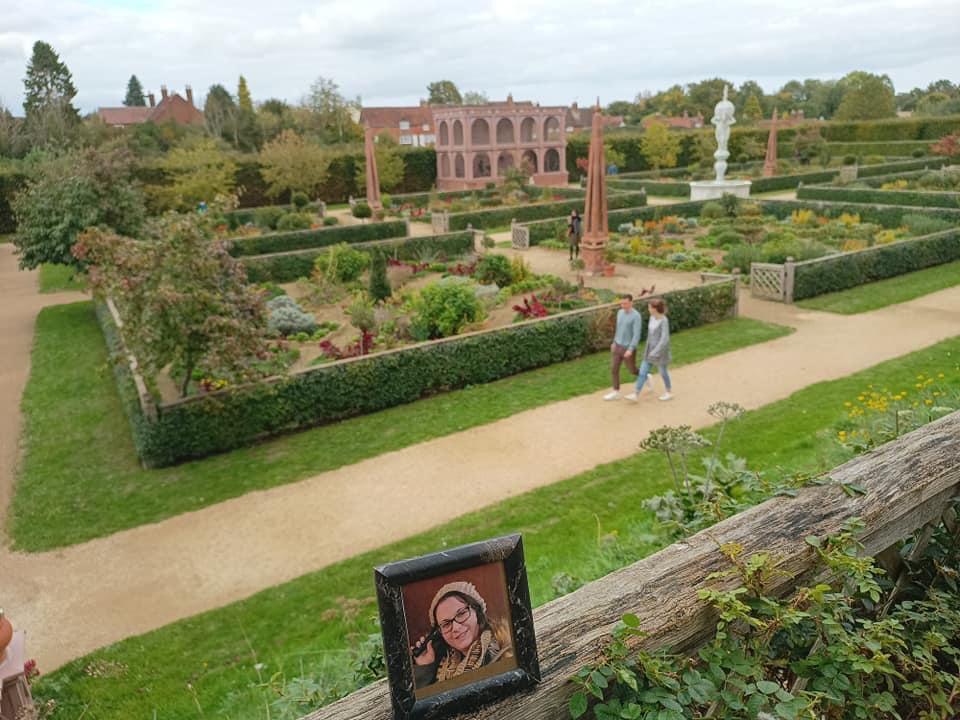
Here’s where the royal scandal begins. Those of you who know your Tudor history know that this was a mystery and scandal that rocked the throne. Robert Dudley was the childhood friend of Elizabeth I, and long held her favour. It was Elizabeth who gave Dudley the castle. The queen visited several times. Dudley developed and improved the castle for the visits, built gardens and private bowers and even created a hunting park. He built the four storey tower for her use, and improved it for her next visit in 1575. It must have worked. Her visit that year was the longest visit to any courtier during her long reign.
Many believe he was her one true love, and he must have thought that, had he been free, she would marry him. Robert, however, was not free. He was very much married. His wife met with a fatal accident when she fell down the stairs. Rumours circulated that this was not an accident, but murder, in order to leave Dudley free to marry the queen. The scandal was so deeply felt that Elizabeth distanced herself for quite some time. As we all know, she never married. Yet Dudley remained her favourite, and when he finally decided to give up waiting and remarried some 20 years later, the jealous Elizabeth permanently banished his wife from court.
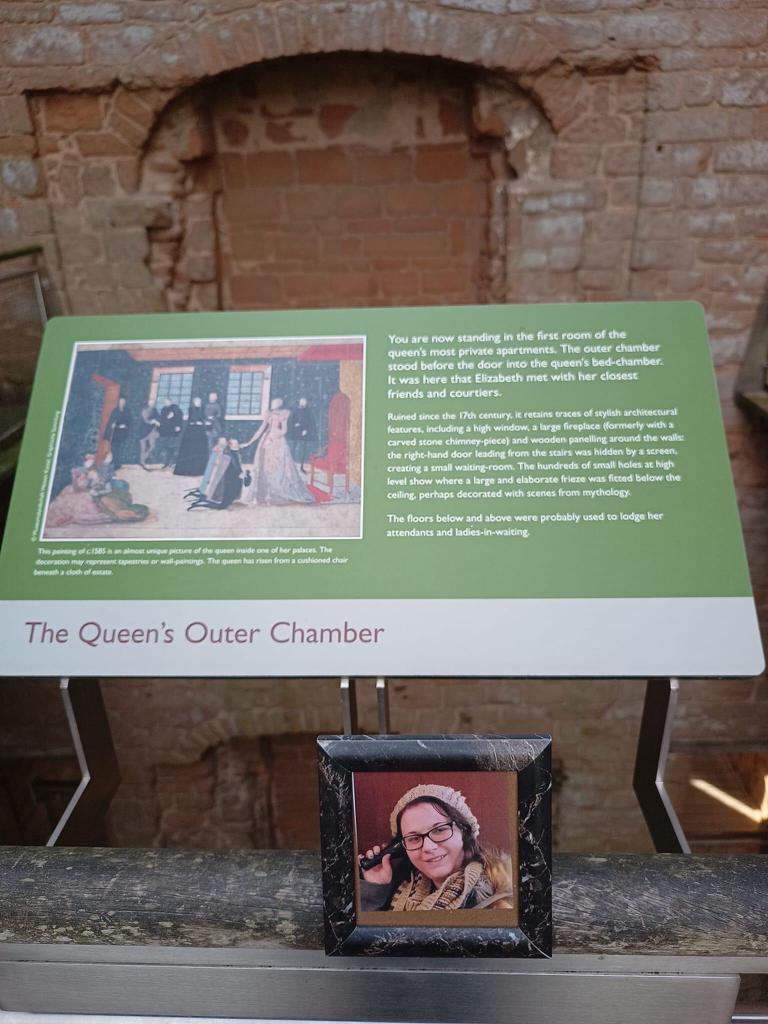
With all of this, you’d expect something pretty impressive. And you get it. Although the castle is pretty much a ruin other than the Tudor tower, the beautiful red stonework, sheer scale and grounds are still magnificent. The entry is through the imposing gates and you’re ready to walk in the footsteps of a queen.
The stables have been converted into a large cafe and exhibition area. It’s very roomy, to be honest, I wonder if they could make better use of the space to accommodate more people. There is seating outside, but having been several times, I know just how busy it gets. Too many customers for the space.
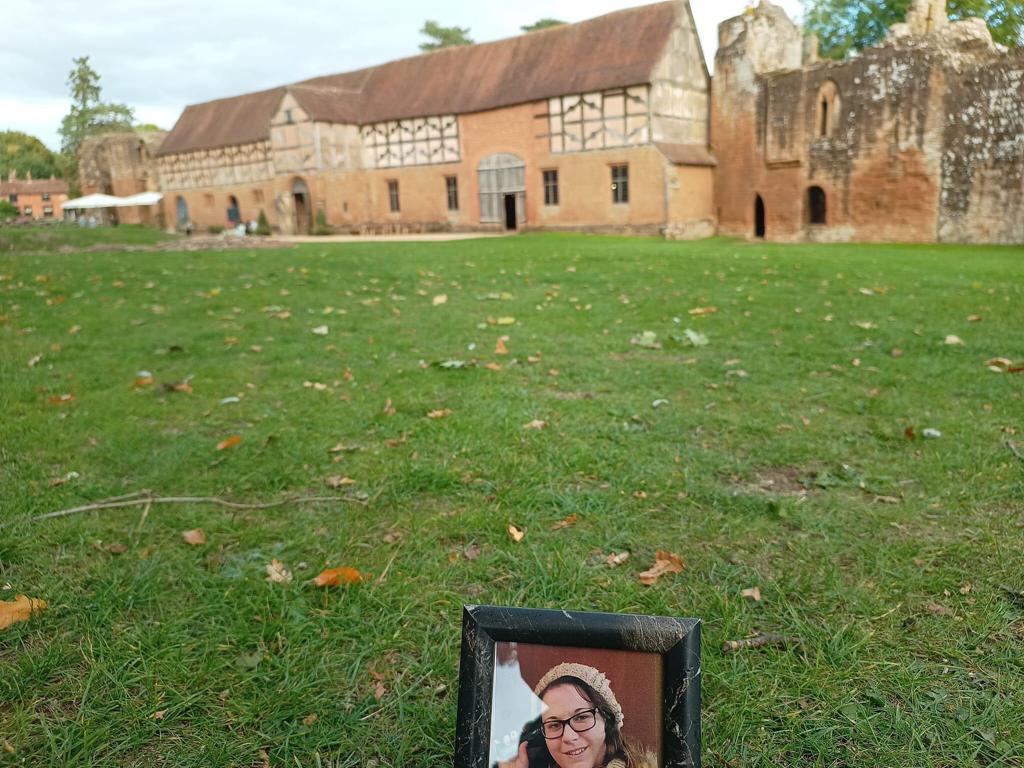
The older parts of the castle are to your left as you enter. The old towers are still in pretty good shape considering what they’ve been through for nearly a thousand years. The stone looks quite orange in the sunlight. The scale of the towers is quite impressive. The castle has such a long history, being added to over hundreds of years. It’s turned into a phenomenal series of towers. At the rear is an impressive Elizabethan garden. You see them in many stately homes, but not as big as this. It has a huge aviary, statues and if you climb up the steps to the castle, you get a great view.
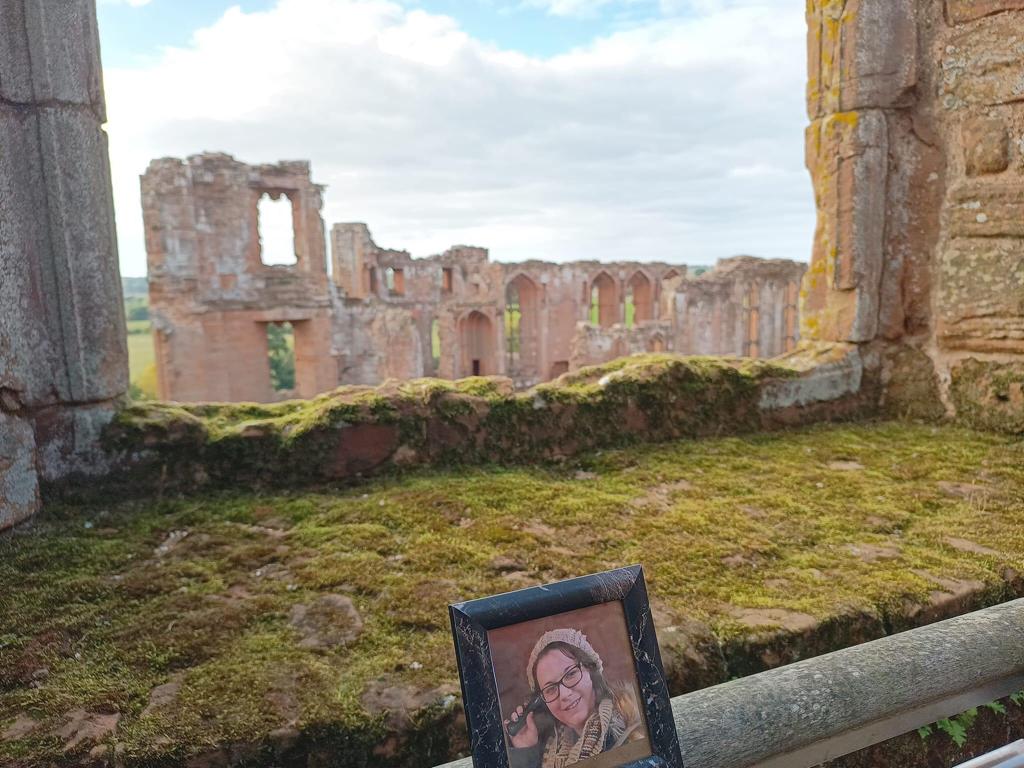
English Heritage have erected stairs in one of the towers, which allows you to climb up and look down on the castle and countryside around. Towards the top is the remainder of Queen Elizabeth’s quarters. The Tudor tower is very well preserved. You could probably move in tomorrow. There’s a lift for anyone who can’t manage the stairs. It quite dark to preserve the woodwork and furniture. There is a floor dedicated to the history of the castle and the “romance” between the queen and Dudley. A room is set aside for children to draw and interact, with a few costumes to try on (adult sized too, if you fancy it).
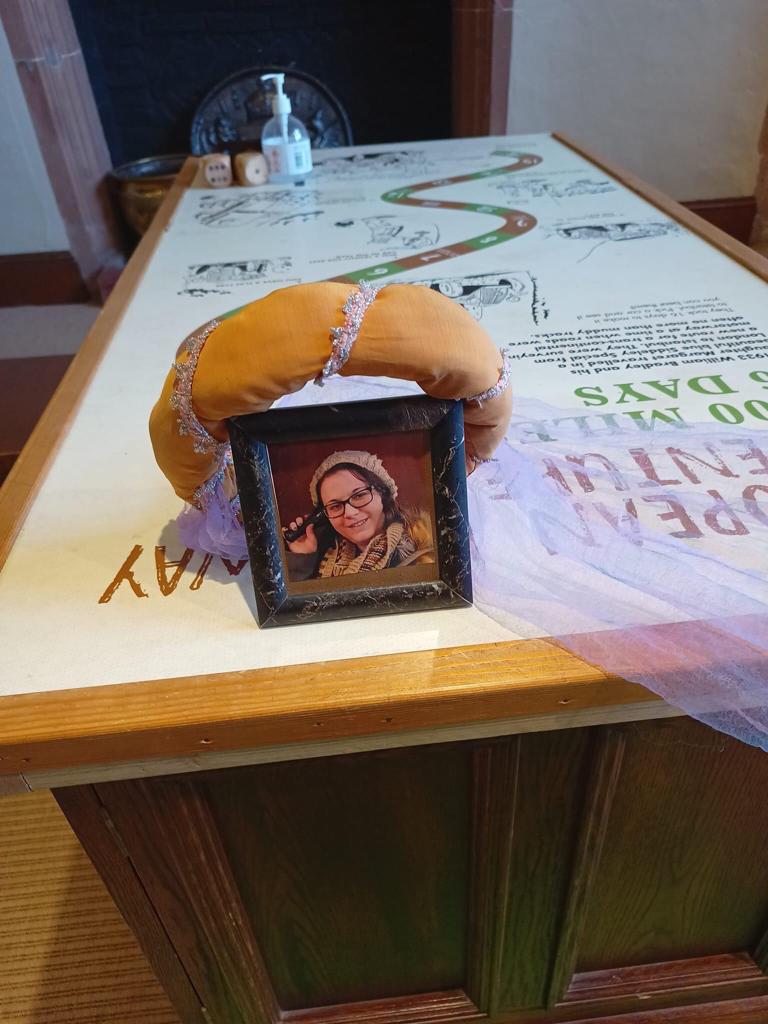
The guides are lovely and very friendly. One volunteer guide saw me taking photos of Amy’s photo and asked what I was doing. When I explained how those of us who loved Amy are trying to keep her blog going he got quite choked up and said that it was the loveliest thing he’d ever heard.
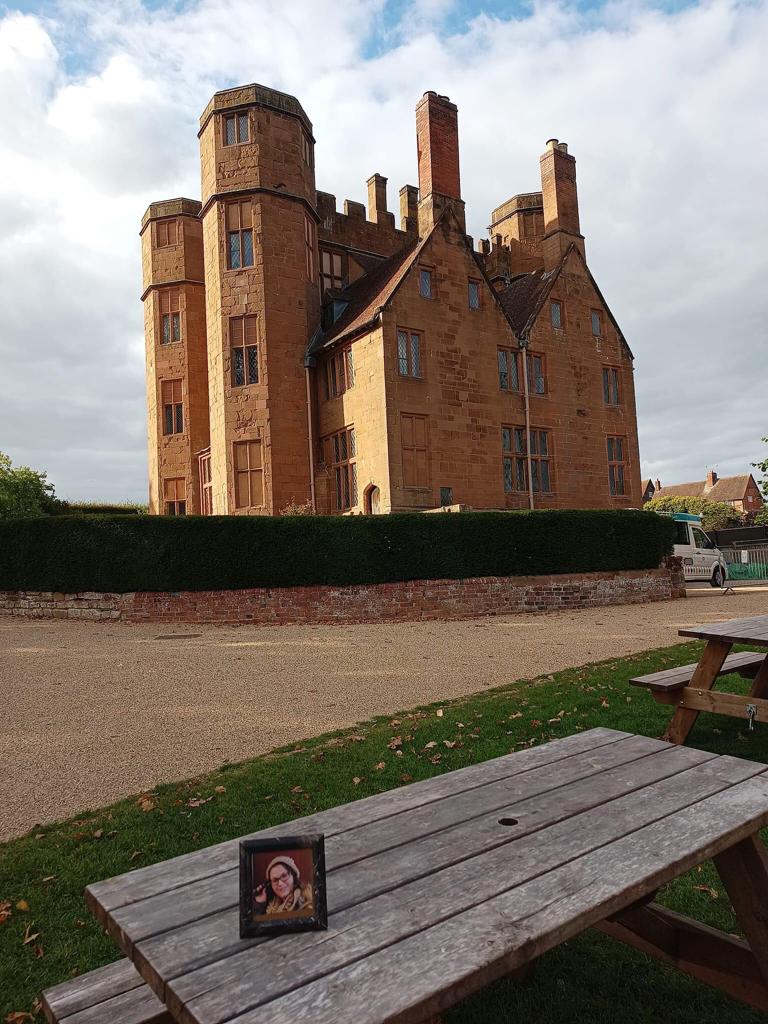
There are a lot of reasons to go to the castle. If Tudor history is your “thing”, you have quite a large amount there, culminating in the last Tudor royal. If you just like impressive castles with a history of warfare, this one has been through the lot. The Elizabethan garden is extraordinary if that’s your choice of reason. It’s a beautiful piece of architecture, built over several hundred years. That in itself is quite something. Or perhaps just a stroll around the well kept grounds, sit under the ancient trees and imagine just what they’ve witnessed over the years as they grew from tiny acorns to the magnificent oaks you see today. Definitely one to put on your list.

